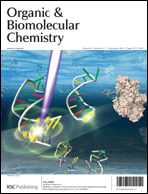While you are thinking about your nominee for the OBC Lecture Award, why not consider making nominations for other journal awards?
ChemComm Emerging Investigator Lectureship
ChemComm is delighted to invite nominations for the very first ChemComm Emerging Investigator Lectureship. The lectureship, which will be awarded annually, will recognise an emerging scientist in the early stages of their independent academic career. Deadline for nominations: 28th February 2011. Visit the ChemComm blog for more information.
Natural Product Reports Award Lecture
The NPR Lecture Award is an annual event which is held at an international meeting of the recipient’s choosing. The recipient will be someone who has made significant research contribution to natural products chemistry in its broadest sense.
Anyone can make a nomination for the award. Simply send the name of the person you would like to nominate, along with a brief justification, to the Editor, Dr Richard Kelly. All nominations should be received by Monday 6th December. Visit to NPR blog for more details.
Chem Soc Rev Emerging Investigators award
Don’t forget to nominate your colleagues for the Chem Soc Rev 2011 Emerging Investigator Award before the end of January. This annual award is given to recognise an emerging scientist who has made a significant contribution to their research field. Those wishing to make a nomination should send details of the nominee, including a brief C.V. together with a letter supporting the nomination, to the Chem Soc Rev Editorial Office by 31st January 2011. Please note that self nomination is not permissible. More details on the CSR blog.











 Xianzhang Bu and colleagues at Sun Yat-Sen University in China have ‘unexpectedly’ discovered new fluorescent trans-dihydrofluoren-3-ones from one pot reactions of benzaldehydes and acetylacetone.
Xianzhang Bu and colleagues at Sun Yat-Sen University in China have ‘unexpectedly’ discovered new fluorescent trans-dihydrofluoren-3-ones from one pot reactions of benzaldehydes and acetylacetone.
